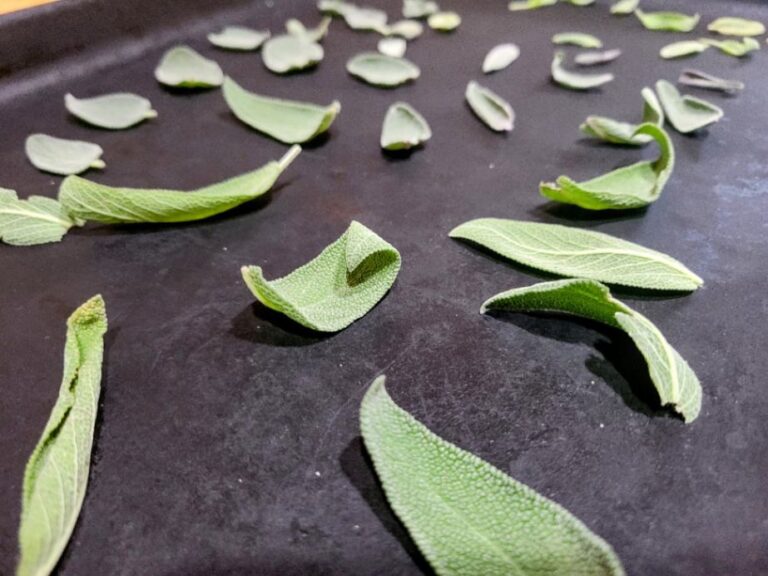This post may contain affiliate links which means I may receive a commission for purchases made through links. I only recommend products that I have personally used. As an Amazon Associate I earn from qualifying purchases. Learn more on my Private Policy page.

With a successful sage harvest from your herb garden under your belt, the next important step is to explore the most effective means of preserving this versatile herb for your future culinary use.
Freezing sage is ideal for preserving sage’s distinct aroma and flavor and extending its shelf life. The best method for freezing sage is to flash-freeze it for 90-120 minutes followed by vacuum sealing it in freezer bags. Properly vacuum-sealed sage leaves can stay good in the freezer for up to a year.
Let’s look at the best method for how to freeze sage step-by-step and explore some tips for best preserving your sage harvest.
Table of Contents
Flash Freeze Sage Then Vacuum Seal for Best Flavor
While duplicating industrial flash-freezing techniques that involve precise air circulation and ultra-low temperatures isn’t practical in home kitchens, it’s still possible to achieve great results by rapidly freezing herbs at home.
Rapidly freezing sage at home can be done by leaving lots of space between individual sage leaves and freezing them in a chest freezer. The colder your freezer is the better.
Woody herbs such as sage, rosemary, thyme, and oregano are particularly well-suited for this flash-freezing method. as these herbs hold up well to this quick freezing process, which locks in their flavor and aroma.
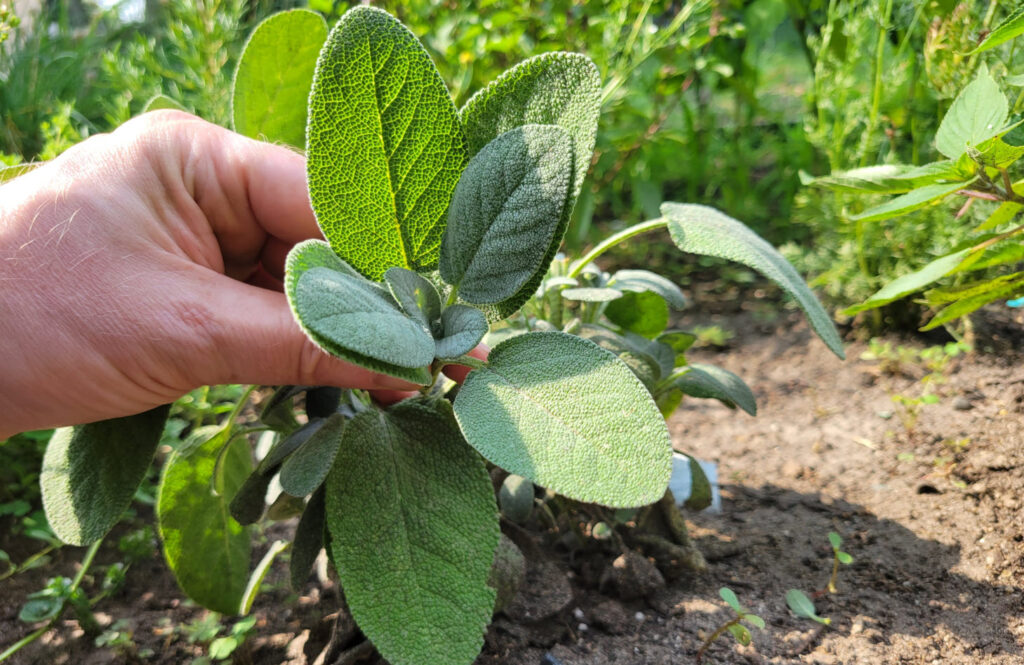
Vacuum-sealing sage leaves after they have frozen can extend their shelf-life even further. Removing as much air as possible creates a nearly oxygen-free environment, preventing oxidation, which can degrade your herbs over time. Vacuum-sealing also helps to prevent ice crystals from forming which can cause freezer burn.
Does Sage Need to be Blanched Before Freezing?
While some herbs benefit from blanching them in boiling water for 15-20 seconds before freezing, not all herbs require this step.
Blanching sage is not necessary before freezing it. Woody herbs like sage, rosemary, and thyme hold up extremely well when they are frozen. While tender herbs such as basil and parsley benefit from blanching to preserve their color and flavor before freezing, there’s no need to do so for hardy herbs like sage.
How to Freeze Sage: Step-by-Step Guide
Follow this step-by-step guide on how to flash-freeze sage to preserve its flavor and aroma for year-round cooking.
1) Wash off Fresh Sage
Prior to freezing your freshly harvested sage leaves, it’s crucial to eliminate any potential contaminants like dirt, debris, or insects. Sage’s fuzzy texture tends to trap dirt, making a thorough rinse essential. Simply place your freshly harvested sage into a colander and rinse it thoroughly with cold water.
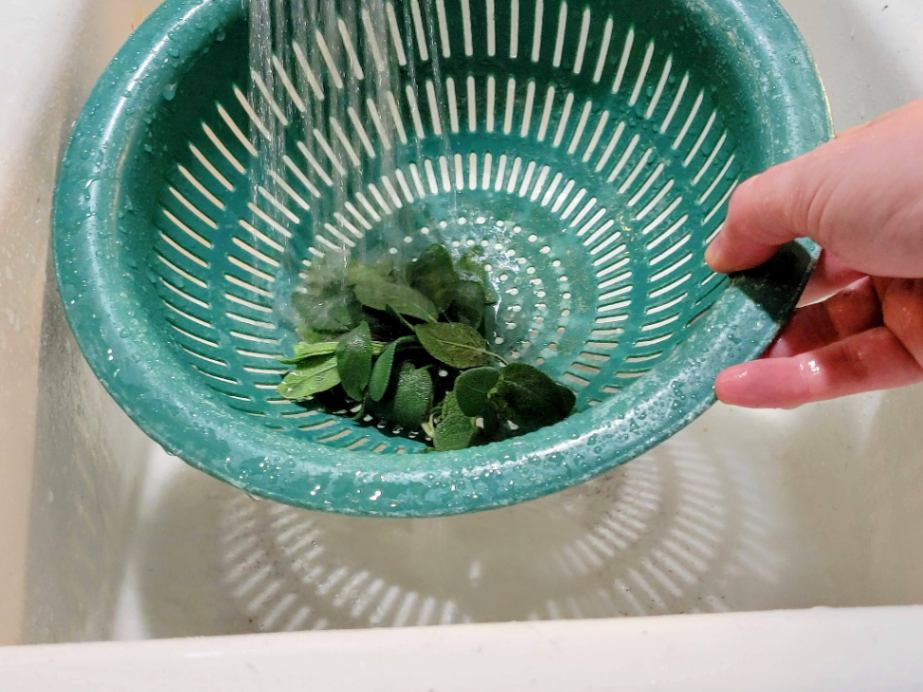
2) Let Sage Leaves Dry Completely
Let your sage leaves dry out completely before freezing to prevent the formation of ice crystals, which can cause freezer burn. Pat your sage leaves dry with paper towels and let them air dry for at least 30 minutes.

3) Remove Sage Leaves from Stems
Once your sage has been washed and dried, the next step is to remove the sage leaves from the stems. It’s important for the sage leaves to be loose before we vacuum seal them after they’re frozen. It’s easier to remove the leaves from the stems at this stage than it is after flash-freezing them.
4) Lay Stems Out on a Baking Sheet
Arrange your sage leaves neatly on a baking sheet. Optionally, you can use parchment paper, but it’s not strictly necessary. Ensure that the leaves are evenly distributed and avoid overlapping to promote even freezing.
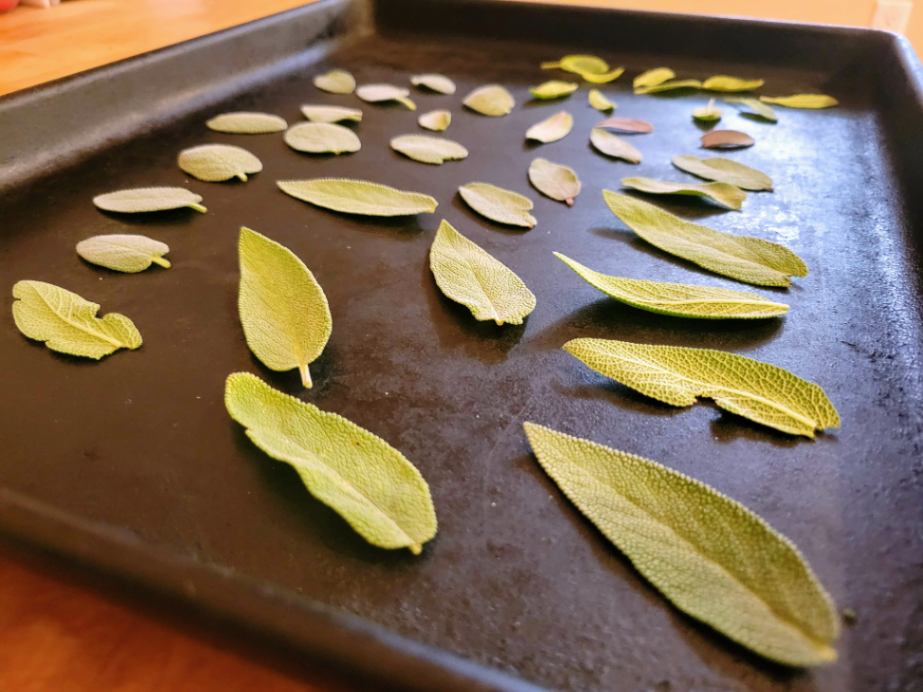
5) Flash Freeze Sage Leaves for 1 1/2 to 2 Hours
Place the baking sheet with the sage leaves into your freezer. A deep freezer will work best, as it’s important for the sage leaves to freeze as quickly as possible for best results. Freeze your sage leaves for at least 90 minutes but for no longer than 2 hours. You don’t want to freezer-burn them.
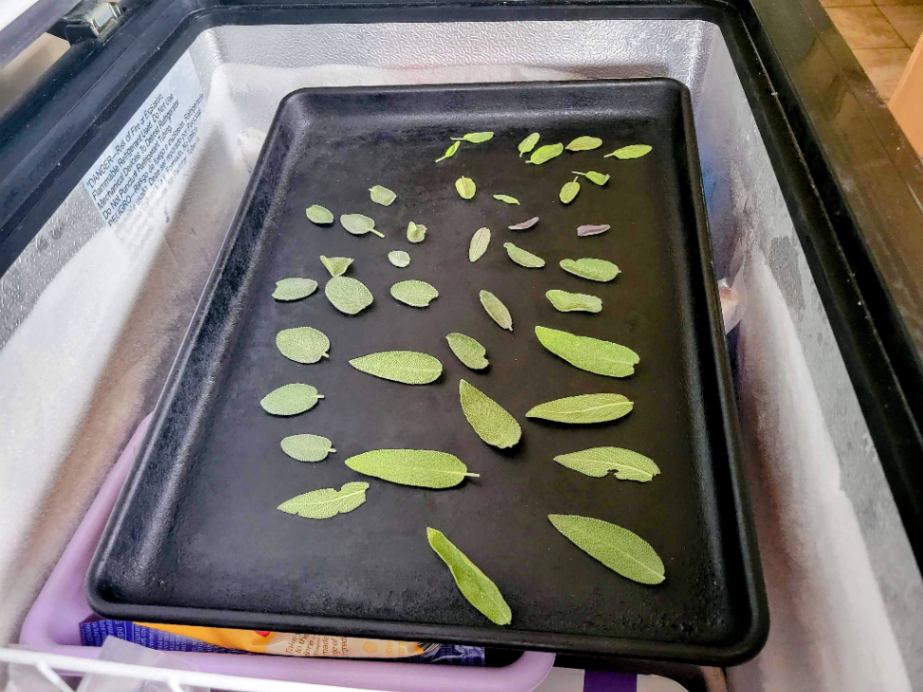
6) Store Frozen Sage Leaves in Vacuum Sealed Bags
Once the sage leaves are frozen, remove the baking sheet from the freezer. Vacuum seal a small handful of sage leaves into vacuum seal bags using a kitchen vacuum sealing machine. I typically try to make several cross seals on the freezer bag when storing herbs, creating several self-contained sections of herbs. This makes it so I don’t have to unseal the entire bag to use some of my frozen herbs.

If you don’t currently have one, vacuum sealing machines are relatively inexpensive, and they allow you to significantly extend the shelf-life of all sorts of foods. I use my FoodSaver sealing machine ALL of the time. Links to some relatively inexpensive models can be found below:
If you don’t have access to a vacuum sealer, you can store your sage leaves in freezer bags. Just try to remove as much air as possible.
How Long Does Frozen Sage Last?
Label and date your sage before tucking it away in the freezer for the long haul. It’s important to understand the longevity of your frozen herbs to maximize their utility in your cooking.
When you freeze and store sage properly in vacuum-sealed bags, it can last for up to one year for culinary use. For the best flavor and aroma, it’s advisable to use frozen sage within the first 6 months.
The bottom line is quick-frozen herbs can last up to a year when they are properly packaged.
Freezing Sage in Ice Cube Trays
If you prefer, you can also chop your sage and freeze it in ice cube trays. But before doing so, consider how you plan to use your sage. If you’re aiming to incorporate sage into recipes like homemade breakfast sausage or stuffing, it’s worth noting that freezing sage in ice cube trays might not be the best approach since it could introduce undesired moisture or oil into your recipes.

For more information, see my article on How to Freeze Herbs in Ice Cube Trays and learn if it’s better to freeze herbs in oil or water.
Conclusion
Freezing sage is a simple yet effective way to preserve its fresh flavor and aroma for an extended period of time. By following this step-by-step guide on how to freeze sage, you can ensure that you have this versatile herb at your fingertips, even when it’s out of season.
To learn about other ways to harvest and preserve sage, check out my articles on:
- How to Harvest Sage: Tips for Optimal Preservation
- How to Dry Rosemary, Sage, Thyme & Oregano: Best Methods
Last Updated on 13 October 2023 by Bob Lee

